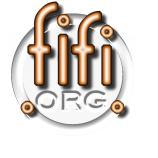GNU Info
 (texinfo)Custom Headings
(texinfo)Custom Headings
How to Make Your Own Headings
=============================
You can use the standard headings provided with Texinfo or specify
your own. By default, Texinfo has no footers, so if you specify them,
the available page size for the main text will be slightly reduced.
Texinfo provides six commands for specifying headings and footings:
* `@everyheading' `@everyfooting' generate page headers and footers
that are the same for both even- and odd-numbered pages.
* `@evenheading' and `@evenfooting' command generate headers and
footers for even-numbered (left-hand) pages.
* `@oddheading' and `@oddfooting' generate headers and footers for
odd-numbered (right-hand) pages.
Write custom heading specifications in the Texinfo file immediately
after the `@end titlepage' command. Enclose your specifications
between `@iftex' and `@end iftex' commands since the
`texinfo-format-buffer' command may not recognize them. Also, you must
cancel the predefined heading commands with the `@headings off' command
before defining your own specifications.
Here is how to tell TeX to place the chapter name at the left, the
page number in the center, and the date at the right of every header
for both even- and odd-numbered pages:
@iftex
@headings off
@everyheading @thischapter @| @thispage @| @today{}
@end iftex
You need to divide the left part from the central part and the central
part from the right part by inserting `@|' between parts. Otherwise,
the specification command will not be able to tell where the text for
one part ends and the next part begins.
Each part can contain text or @-commands. The text is printed as if
the part were within an ordinary paragraph in the body of the page.
The @-commands replace themselves with the page number, date, chapter
name, or whatever.
Here are the six heading and footing commands:
`@everyheading LEFT @| CENTER @| RIGHT'
`@everyfooting LEFT @| CENTER @| RIGHT'
The `every' commands specify the format for both even- and
odd-numbered pages. These commands are for documents that are
printed on one side of each sheet of paper, or for documents in
which you want symmetrical headers or footers.
`@evenheading LEFT @| CENTER @| RIGHT'
`@oddheading LEFT @| CENTER @| RIGHT'
`@evenfooting LEFT @| CENTER @| RIGHT'
`@oddfooting LEFT @| CENTER @| RIGHT'
The `even' and `odd' commands specify the format for even-numbered
pages and odd-numbered pages. These commands are for books and
manuals that are printed on both sides of each sheet of paper.
Use the `@this...' series of @-commands to provide the names of
chapters and sections and the page number. You can use the `@this...'
commands in the left, center, or right portions of headers and footers,
or anywhere else in a Texinfo file so long as they are between `@iftex'
and `@end iftex' commands.
Here are the `@this...' commands:
`@thispage'
Expands to the current page number.
`@thischaptername'
Expands to the name of the current chapter.
`@thischapter'
Expands to the number and name of the current chapter, in the
format `Chapter 1: Title'.
`@thistitle'
Expands to the name of the document, as specified by the
`@settitle' command.
`@thisfile'
For `@include' files only: expands to the name of the current
`@include' file. If the current Texinfo source file is not an
`@include' file, this command has no effect. This command does
_not_ provide the name of the current Texinfo source file unless
it is an `@include' file. (Note: Include Files, for more
information about `@include' files.)
You can also use the `@today{}' command, which expands to the current
date, in `1 Jan 1900' format.
Other @-commands and text are printed in a header or footer just as
if they were in the body of a page. It is useful to incorporate text,
particularly when you are writing drafts:
@iftex
@headings off
@everyheading @emph{Draft!} @| @thispage @| @thischapter
@everyfooting @| @| Version: 0.27: @today{}
@end iftex
Beware of overlong titles: they may overlap another part of the
header or footer and blot it out.
automatically generated by info2www version 1.2.2.9
